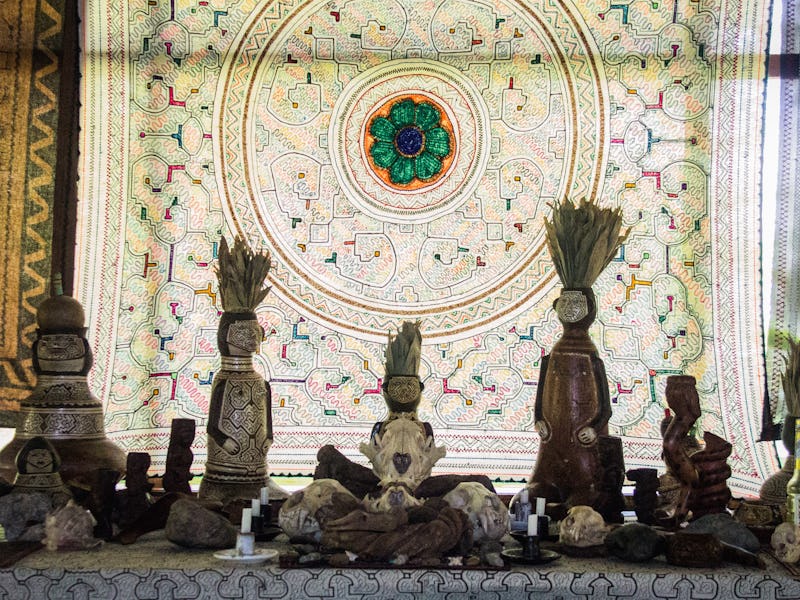Ayahuasca Murder Threatens to Set Back Critical Psychedelic Research
The recent ayahuasca-induced stabbing at a Peruvian retreat illustrates the need for more research into its medical uses.

A Canadian man tripping on ayahuasca stabbed a fellow guest to death at an alternative medicine center in Peru this week, rekindling public fears about the dangers of using psychedelics for medical treatment. A headline in The Guardian chalked the killing up to a hallucinogen-induced “bad trip,” while The Independent focused on the “psychedelic Ayahuasca ceremony” setting. It’s a major setback for organizations like the MAPS, which is responsible for the uptick in research into the various medical uses of psychedelics in recent years.
While there are studies to back up ayahuasca’s potential for treating drug addiction, depression, and mental illness, there’s little non-anecdotal evidence to show that it makes people violent.
That’s not to say it’s not possible. Bad trips happen and that’s why research into its appropriate use needs to continue. Ayahuasca, a plant-derived drug usually consumed as a brew, is traditionally used by the indigenous people of Amazonian Peru in spiritual ceremonies that, more often than not, end in vomiting (or, as Erowid calls it, “the purge”).
The effects of the trip, which lasts anywhere from 2-6 hours, can include, according to one MAPS researcher, “deeper knowledge of oneself, personal and spiritual development, or healing for a variety of psychological and physiological afflictions, including substance dependencies.” What the author does not say, however, is that the drug is normally administered “by a trained expert in a ritual context.”
It isn’t clear what exactly happened at Phoenix Ayahuasca, the Iquitos-based “shamanic healing retreat” run by Tracie Thornberry, a University of Newcastle-trained counsellor, but violent incidents in relation to ayahuasca ceremonies are rare. The most recent ayahuasca-related death took place in 2014 when an American teenager was found dead after a session at Peru’s Shimbre Shamanic Center. Violence, however, did not seem to play a role.
Ayahuasca tourism in Peru has increased because of the drug's publicized potential for treating drug addiction and depression.
The ayahuasca tourism industry in Peru has grown in recent years, largely because its ability to treat mental health issues — especially depression — has been increasingly documented, officially and unofficially, online.
MAPS is currently funding a study involving the Centre for Addictions Research of British Columbia on ayahuasca’s potential to treat addictions, compulsive behavior, and self-harming thought patterns. The organization, however, warns that the “pharmacology of ayahuasca is not completely understood” — so people seeking treatment under unofficial (read: institutional) means are advised to seriously consider the costs and benefits before catching a flight down to Peru.
Understanding ayahuasca’s mechanisms, of course, requires research and that research requires funding and public support. While it’s important to make the public aware of the drug’s potential risks, it’s equally important not to exaggerate them.